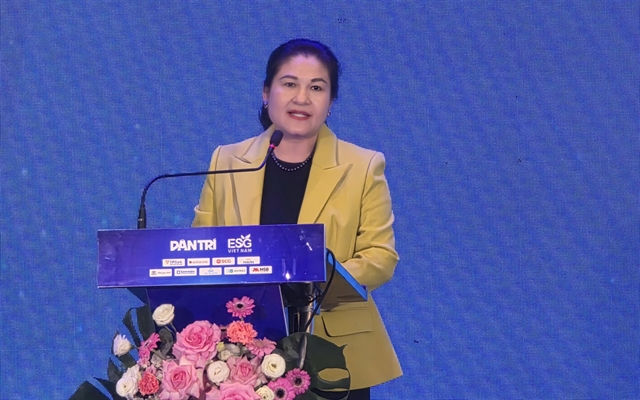 Economy
Economy


|
| A customer at a VietinBank office in Hà Nội. — VNA/VNS Photo |
HÀ NỘI — The Hồ Chí Minh City Stock Exchange (HOSE) has received VietABank’s listing application for nearly 540 million shares.
With a charter capital of VNĐ5.4 trillion or US$212.6 million, VietABank is currently trading on UPCoM under the ticker VAB.
According to Chairman of the Board Phương Thanh Long, the bank plans to transfer its listing in the third quarter of 2025 to enhance liquidity and trading activity. Long added that the move is expected to boost VietABank’s credibility, market position, and brand recognition, while facilitating access to capital from both domestic and international investors.
Other banks are following suit.
KienlongBank (KLB) has entrusted its Board of Directors with choosing a stock exchange for its listing, aiming to complete the process in the fourth quarter of 2025. The bank regards listing as a vital step in increasing transparency, strengthening operational capacity and improving competitiveness in line with strategic objectives. Notably, KienlongBank had previously withdrawn its listing application from HOSE in January 2023 due to unfavourable market conditions, citing the need to protect shareholder interests.
Similarly, BVBank’s 2025 annual general meeting approved a plan to list its shares (BVB) on HOSE this year, after it failed to carry out a planned transfer in 2024.
VietBank has also reaffirmed its intention to list on the HOSE when market conditions are favourable. Although the bank already meets listing requirements, factors such as the global trade war and US tariff policies have caused significant market volatility.
VietBank’s board stated it would consider listing in either 2025 or 2026 to optimise share value and ensure maximum benefit for shareholders.
The drive toward listing is part of a broader strategy among banks to strengthen capital bases.
VietABank’s 2025 general meeting approved a plan to increase charter capital from nearly VNĐ5.4 trillion to VNĐ11.5 trillion. This will be achieved through three methods: issuing shares from retained earnings and capital reserves (VNĐ2.8 trillion), selling shares to employees via an ESOP programme (VNĐ200 billion) and offering shares to existing shareholders (VNĐ3.1 trillion).
VietBank also plans to raise charter capital in 2025 through two phases of share issuance. The first round will see the issuance of 107.1 million shares (15 per cent of existing capital) to current shareholders, valued at nearly VNĐ1.1 trillion, using retained earnings and reserves accumulated through 2024. The second round, scheduled for later in the year, will involve nearly 271 million new shares (33 per cent of post-round 1 capital), priced at VNĐ10,000 each. If both rounds are successful, VietBank’s charter capital will rise from VNĐ7.1 trillion to nearly VNĐ10.9 trillion.
Meanwhile, BVBank aims to increase its capital from VNĐ6.4 trillion to VNĐ7.6 trillion in 2025. This includes the issuance of over 106.8 million shares to existing shareholders at a 6:1 ratio, priced at VNĐ10,000 per share. The proceeds of over VNĐ1 trillion will be used to expand lending capacity. Additionally, BVBank will issue up to 20 million ESOP shares to employees at VNĐ11,000 per share, subject to a one-year lock-in. This issuance will raise to VNĐ200 billion, also earmarked for lending.
Saigonbank (SGB), currently listed on UPCoM, has signed a consultancy agreement to explore a transfer to the HCM City Stock Exchange (HOSE) or the Hanoi Stock Exchange (HNX). With a solid performance in 2024, recording nearly VNĐ100 billion in pre-tax profit and targeting VNĐ300 billion in 2025, Saigonbank plans to issue nearly 33.9 million bonus shares (10 per cent) to raise its charter capital from VNĐ3.3 trillion to VNĐ3.7 trillion. The additional capital will fund infrastructure, IT upgrades, digital transformation and lending expansion.
According to Associate Professor Dr Nguyễn Hữu Huân of the University of Economics, HCM City, raising charter capital is essential for banks to improve their capital adequacy ratios (CAR), meet international standards and enhance competitiveness. Listing shares, he noted, improves liquidity and enables more effective capital mobilisation via the stock market. — VNS




